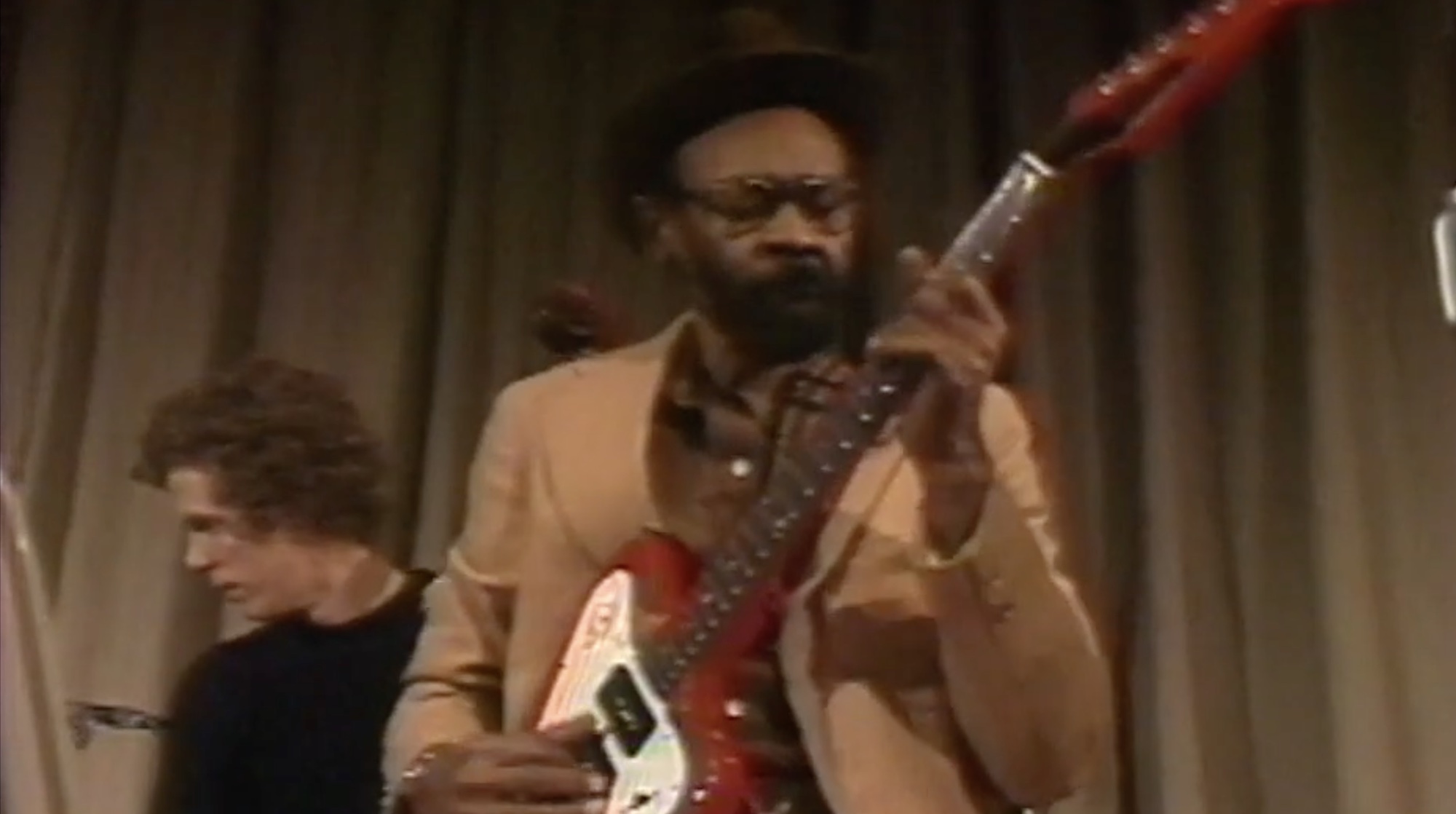
What is it they always say about life imitating art? Well, you rarely see as sharp an example of this phenomenon as you do in the case of electric guitar pioneer Pat Hare.
Back in 1954 – over a decade before Cream's first gig, almost 15 years before the birth of Led Zeppelin, and even a few years before the release of Link Wray's menacing, distorted guitar instrumental, Rumble – bluesman Pat Hare released an absolutely brutal single titled I’m Gonna Murder My Baby, driven by furious, distorted power chords that can still raise the hair on your neck today.
As you may have gleaned from the title, this tune – described by Muddy Waters biographer Robert Palmer as “The Texas Chainsaw Massacre on a three-minute vinyl disc“ isn't a sweet, cooing lullaby. Its bitter lyrics radiate a white-hot fury that hammers home the sentiment of the song's unambiguous name.
I’m Gonna Murder My Baby was a rare solo recording from the Arkansas native, who's most well-known for bringing the same (though in a slightly more measured way) aggressive, gnarled, and into-the-red lead guitar sound to the studio and stage with blues luminaries like Howlin’ Wolf, James Cotton, Muddy Waters, and Bobby Bland.
Hare's name doesn't get thrown around nearly as much as those he played for, or even famed blues guitar sidemen like Hubert Sumlin. Part of this lack of recognition can probably be chalked up to how, in 1963, the violent fantasies of Hare's most famous solo tune became reality.
Hare was known – particularly when alcohol was involved – to have a violent temper. He, in separate respective incidents, punched and shot at Howlin' Wolf with a handgun, and threatened to kill Muddy Waters' harmonica player, George Buford.
The guitarist's domestic life – as I’m Gonna Murder My Baby would indicate – was no more peaceful. In 1963, Hare shot his then-girlfriend during a fight, and subsequently – after neighbors called for law enforcement – shot the first policeman to respond to the incident. Both Hare's girlfriend and the injured policeman died of their injuries.
Hare was sentenced to life in prison, and would die there of lung cancer in 1980, at the age of 49.
Shortly before his death, Hare was the subject of a PBS mini-documentary. The guitarist was allowed to continue playing behind bars, and even given permission to play occasional concerts outside prison walls. One of these was captured for posterity by a PBS film crew, and shines a light on the full breadth of Hare's skill.
Fingerpicking all the way, Hare showcases his lyrical phrases, enviable vibrato, and deft melodic touch – a far cry from the fire and brimstone proto-metal of his early- and mid-'50s era work.
Though his relationship with Hare had its ups and downs, Muddy Waters was always quick to acknowledge the skill and lightning-like energy of his bandmate's playing.
“He’s a real tough baby,“ Waters once said of Hare, “and when he’s liquored up, man, he can really play!“
James Cotton – well-known for his time with Waters, in addition to his solo work – compared Hare favorably to Waters' well-regarded previous guitarist, Jimmy Rogers. In response to listeners who felt that Hare should hew more closely to Rogers' style, Cotton said, “Pat played so much better that it didn’t make no difference.“
Sun Records impresario Sam Phillips – a man who saw and recorded his fair share of ground-breaking rock 'n' roll guitar players – attested to the rawness and power of Hare's playing. Hare “had a Fender amp and a pretty good guitar,“ Phillips told Robert Palmer. “His pickup was powerful, and I think he had a mismatch of impedance. It was a little more than his amp could stand, but it felt good.“
Stevie Ray Vaughan acknowledged Hare as one of his major influences, while Eric Clapton made Bobby “Blue“ Bland's Farther Up the Road – the original recording of which featured Hare on lead guitar – a standard of his live repertoire.
Rock critic Dave Marsh succinctly summed up Hare's importance, describing the late guitarist's work on Farther Up the Road, as “providing the missing link between T-Bone Walker and Eric Clapton.“







